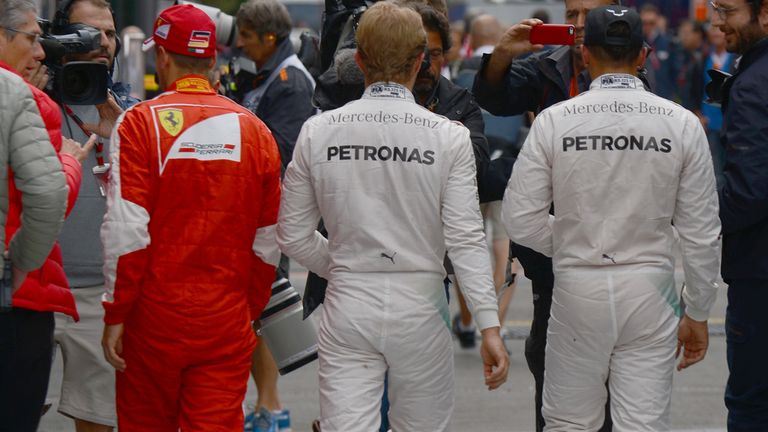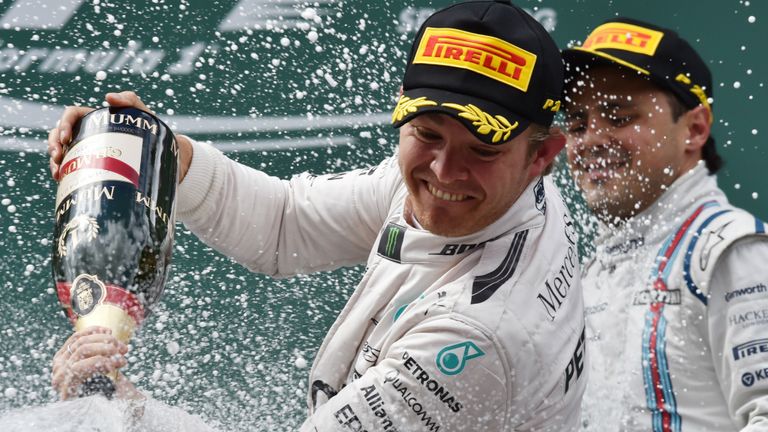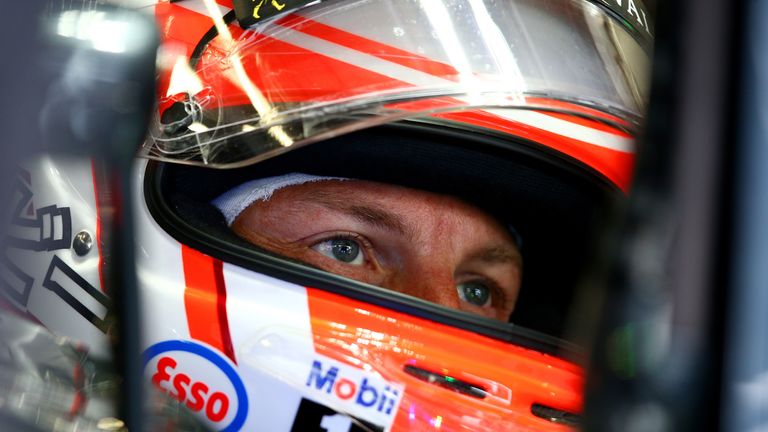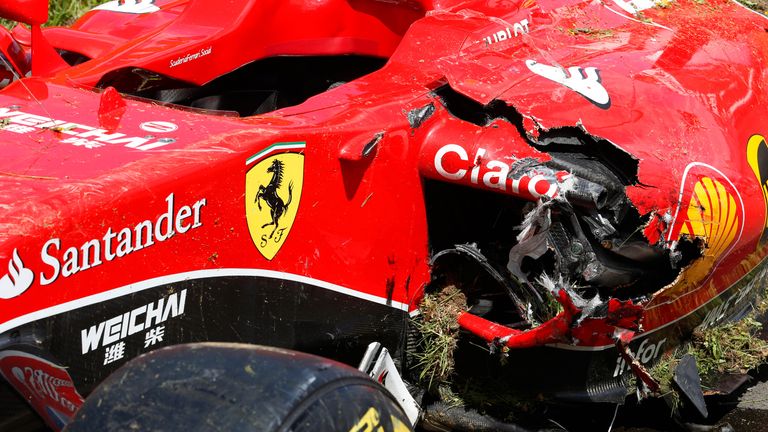Conclusions from the Austrian GP
Enough's enough as F1 continues to air its dirty laundry in public, Rosberg shows he never knows when he's beaten, and why it may be time for some charity towards the grid's struggling giants
Monday 22 June 2015 14:27, UK
F1 is talking like it has lost the plot
F1 is in need of a rip-snorter at Silverstone next week. It could also do with taking down its dirty laundry.
The last two events, featuring a couple of routine races played out to a soundtrack of Ratnering – it is almost beyond irony that Bernie Ecclestone has been quoted as describing the sport’s current fare as “c**p” – have done the sport more harm than good in the court of public opinion.
And, incredibly, it is F1 itself which is delivering the case for the prosecution.
A year of Mercedes dominance has seemingly dulled the sport’s spirit, culminating in Red Bull openly attacking F1 at an event which they themselves were hosting. Small wonder the grandstands dotted around the Red Bull Ring, packed to the rafters 12 months ago, were only half-full this weekend when the organisers felt compelled to produce a pre-race publication moribundly predicting Mercedes dominance for the next five years. Always prone to extremes, F1 has gone one better and out-Ratnered Ratner.
But precisely what good anyone in F1 believes will come from this infectious insistence on talking itself down is also anyone’s guess. The recent absence of a classic race to act as a buffer against the brickbats hurled at a sport which, to the public at large, is a marmite-equivalent is unfortunate. But the real befuddlement remains why F1 itself has made F1-bashing the fashionable thing to do. Every sport has problems but no other sport is quite so determined to so loudly and so frequently proclaim them in public.
Enough of the dirty laundry – put a sock in it instead.
Rosberg can’t be written off
Nico Rosberg is the man who just won’t go away. Just when you thought that Lewis Hamilton was going to romp away over the horizon in the race for the world championship, three victories in the last four Grands Prix have hauled the German back from the brink and within 10 points of the summit. A championship which appeared to be a one-way street is turning out to be a close-run contest again.
Given that Hamilton has started seven of the eight races from pole position, Rosberg’s close proximity in the standings is remarkable. The predominant reason, of course, is the excellence of the Mercedes package and a car so strong which, so long as it stays reliable and is kept out of trouble, is all-but guaranteed a podium finish.
Yet Rosberg is proving himself worthy of the package, producing arguably the best of his 11 victories in F1 this weekend as he made Hamilton look sluggish. But it is Rosberg’s mental fortitude, and not just his under-rated pace, which makes him a formidable opponent. Only after Spa last August, when Hamilton won a critical PR battle, has Rosberg floundered. But remember his determination to finish November’s race in Abu Dhabi even though all was lost? We should have heeded the message then. This is a driver who never knows when he is beaten.
McLaren-Honda in danger of ceasing to make sense
Maybe it was the double retirement in successive races. Perhaps it was the chronic lack of pace. Or just maybe it was the ignominy of a 50-place grid demotion in a field of 20, a punishment that mixed the farcical with a stark illustration of just how inept the McLaren-Honda re-alliance has been so far. Either way, the conversation about the old-but-new partnership took a significant deviation this weekend.
Dissention against the wisdom of the team’s decision to abandon Mercedes power for a reunion with Honda remains rare. The rationale – in essence, that a team will not be able to win the world championship unless it is a ‘works’ outfit – continues to carry consensual weight in the paddock and stand up to scrutiny on track. Just look at how far back Williams remain from Mercedes despite carrying their engines. And just note the reputed wariness of Red Bull after Ferrari’s public offer to become their power controllers, sorry, providers.
Yet as McLaren-Honda continue to slump to new low after new nadir, it is becoming increasingly difficult to simply brush aside the poverty of their results with lofty talk of a promising future and the advantages of nifty-sounding OEM provision. Instead, the argument that McLaren and Honda returned to the track together a year prematurely is beginning to prosper while the pertinent question of how Honda could be this under-prepared is starting to gain traction.
Worse, fear is mounting that if they are this far behind – in laps as well as times – after eight months (remember, the McLaren-Honda hybrid first ran at the Abu Dhabi test last November) then what realistic hope is there of the team being competitive, let alone winners, in 2016 as well?
If what follows is another write-off then even the rationale which underpins McLaren’s decision to switch will fall into jeopardy.
F1’s penalty rule needs overhauling – or abolishing
So let’s just look at the penalty odyssey endured and experienced by Jenson Button this weekend as an illustration of how the engine rules are currently working. Or not.
To start with, there was the punishment itself. The small print announced that the McLaren driver would have to take a 10-grid place demotion for using a sixth turbocharger. Five more were then added for a sixth MGU-H. And then another for a sixth ICE. And five more for a sixth MGU-K.
Still with us so far?
The big print then announced Button faced a 25-place demotion despite the field only consisting of 20 cars. But for the sheer ludicrousness, it would almost be funny.
Only able to serve a fifth of his penalty after qualifying, the upshot was that Button faced a hefty second penalty at the start of the race as crime met punishment then punishment again.
After various calculations, it was eventually determined that Button would have to take a 10-second stop-and-go whereas team-mate Fernando Alonso would only have to put up with the inconvenience of a drive-through after qualifying a couple of places further up the grid and thus being able to serve almost a third of his penalty. Daniel Ricciardo, meanwhile, was hit with a five-second timed penalty at his first pit-stop while Daniil Kvyat first went back 10 places after his engine-rules breach and then leapt up three races once Alonso, Ricciardo and Button’s punishments were dished out.
Now try imagine explaining all that to the average man in the pub or being part of the crowd at the Red Bull Ring on Saturday afternoon and leaving the circuit without much of a clue as to who was where on the grid.
It is a rule which need cleaning up – and can be done so with straightforward simplicity. Given the restriction is only affecting teams stuck at the back of the grid who are currently no threat to the frontrunners, why not just abolish it altogether for the next six months. True, it would sound like charity at the pinnacle of motorsport, but some big-picture benevolence from Mercedes and Ferrari to their struggling rivals could be the good-news story the sport is currently crying out for.
Raikkonen may not be in danger but his seat is
At which point, one wonders, did Kimi Raikkonen have second thoughts about his recent declaration that F1 needed to be “more dangerous” when Fernando Alonso’s McLaren attempted to enter the cockpit of his Ferrari on the first lap of the Austrian GP?
Fortunately, the accident ended safely for both drivers and both former champions were able to climb out of the wreckage unscathed. But there can no longer be any doubt that Raikkonen’s F1 future is in clear and present immediate danger. The qualifying woes have become chronic; a longstanding struggle with the engine mode that must be used for the first 90 seconds after the start of a race or a restart has re-emerged to race-wrecking effect; and now Ferrari are under threat from Williams in the Constructors’ Championship as a result of Raikkonen only contributing 72 of their haul of 192 points.
A line, surely, was crossed this weekend marking the point where Raikkonen is more likely to be dropped than not. As a decision will most probably be taken around September – when, for illustration, the Ferrari-related futures of Alonso and Vettel were decided last year – Raikkonen has most probably only two or three races to save his career from early retirement.
PG







